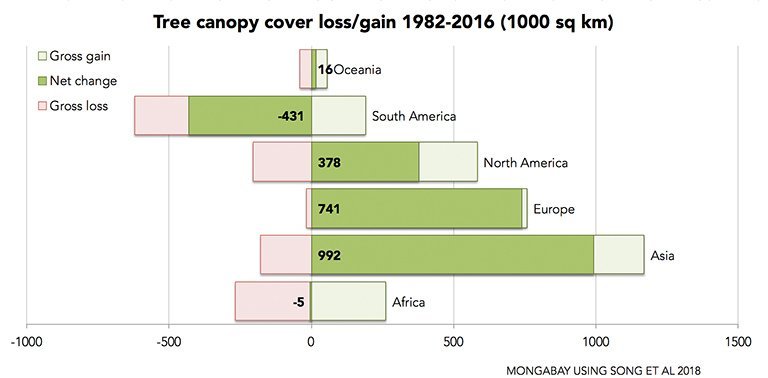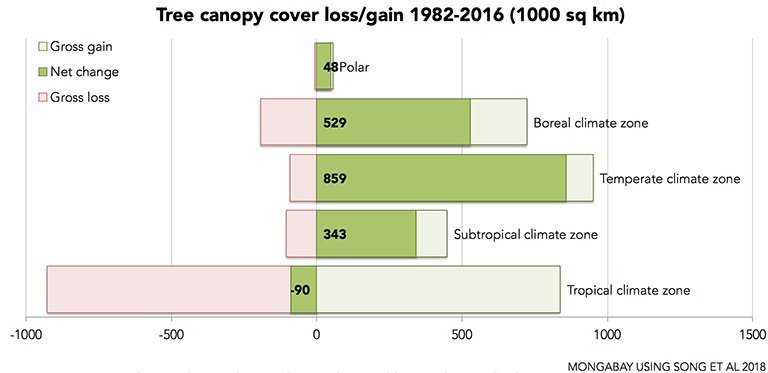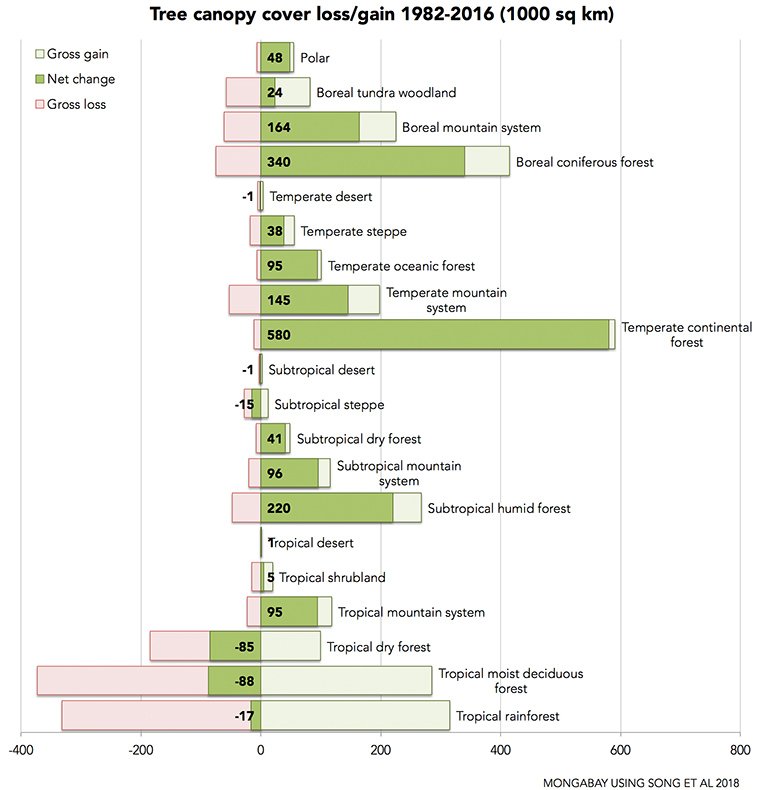
There is no doubt that the world is facing serious environmental problems, from trash and chemicals in the ocean to toxic fumes in the air.
However, a new study led by Xiao-Peng Song and Matthew Hansen of the University of Maryland gives us some good environmental news for a change, there are more trees on the planet than they were 30 years ago. The researchers used data taken by satellites from 1982 to 2016 and found that despite ongoing deforestation and forest fires, the world’s tree cover actually increased by 2.24 million square kilometers, which is an area the size of Texas and Alaska combined.
Unfortunately, some bad news was revealed in the report as well, although the overall amount of trees increased, researchers also noticed an extreme die-off of the earth’s most diverse ecosystems and tropical forests.
“The results of this study reflect a human-dominated Earth system. Direct human action on landscapes is found over large areas on every continent, from intensification and extensification of agriculture to increases in forestry and urban land uses, with implications for the maintenance of ecosystem services,” the researchers wrote.
“A global net gain in tree canopy contradicts current understanding of long-term forest area change; the Food and Agriculture Organization of the United Nations (FAO) reported a net forest loss between 1990 and 2015. However, our gross tree canopy loss estimate (−1.33 million square kilometers, −4.2%) agrees in magnitude with the FAO’s estimate of net forest area change (−1.29 million square kilometers, −3%), despite differences in the time period covered and definition of forest,” the study said.
The researchers also warned that:
“Expansion of the agricultural frontier is the primary driver of deforestation in the tropics. The ‘arc of deforestation’ along the southeastern edge of the Amazon has been well-documented. Clearing of natural vegetation for export-oriented industrial agriculture also prevailed in the Cerrado and the Gran Chaco. Spatially clustered hotspots of deforestation are also found in Queensland, Australia, and in Southeast Asia—including Myanmar, Vietnam, Cambodia and Indonesia—diminishing the already scarce primary forests of the region. In sub-Saharan Africa, tree cover loss was pervasive across the Congolian rainforests and the Miombo woodlands, historically related to smallholder agriculture and increasingly to commodity crop cultivation. Forests in boreal Canada, eastern Alaska and central Siberia exhibited large patches of tree canopy loss and short vegetation gain, similar to the tropics. However, these are the result of persistent disturbances from wildfires and subsequent recovery of natural vegetation.”
This study shows that humans can make a huge impact on the environment with just a small amount of effort, but there is still much work to be done. Below are some charts provided by Mongabay, showing the findings of the study:



My hope is that crypto will change the financial incentives behind deforestation, unhooking the clasp between borders and currencies. It's also sad that factory farms provided the disincentive for people to grow their own food rather than their own Kentucky blue grass. Maybe the cannabis industry can spark more interest in gardening.
I would only add that hemp is a powerful crop for people to grow. It would really curb our need for wood and help solidify individual sovereignty
Trees are a renewable resource.
All that pesky CO2 - it gets everywhere, feeding those tree's, and things we eat..
It should be illegal, or taxed...ohhhhhhhh
Buenas noticias, debemos seguir trabajando para que esas sifras sigan subiendo.